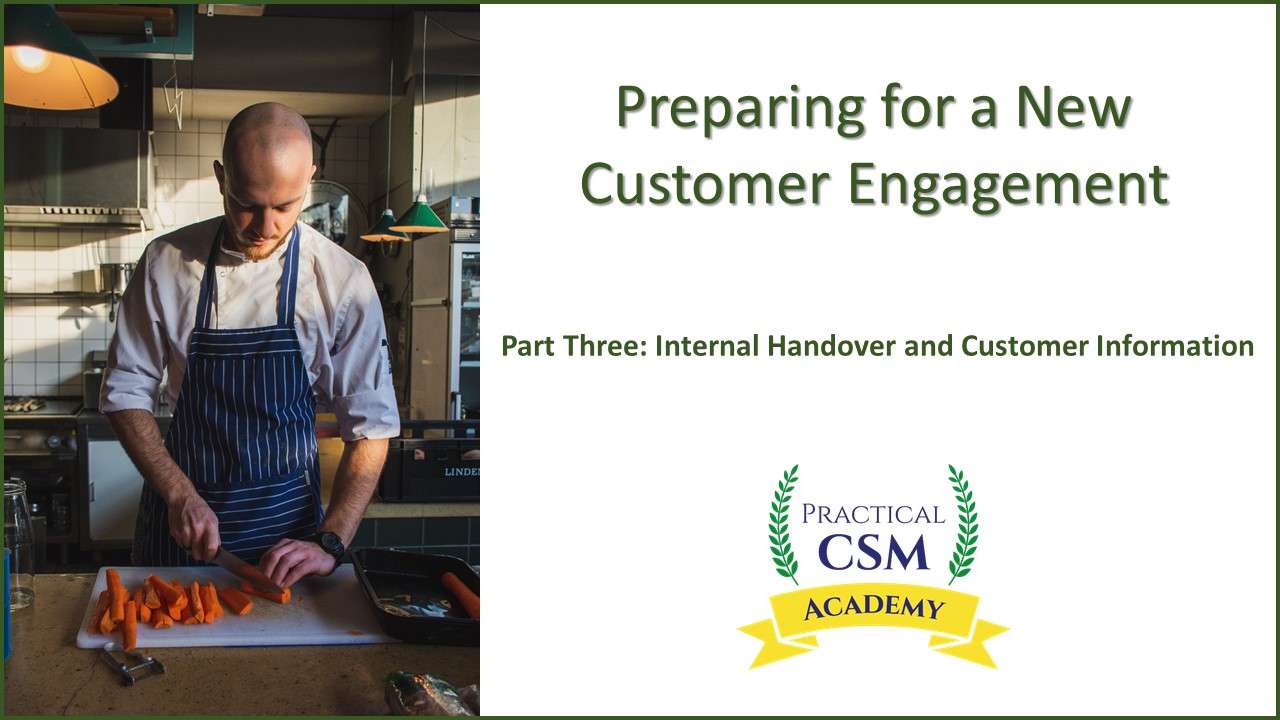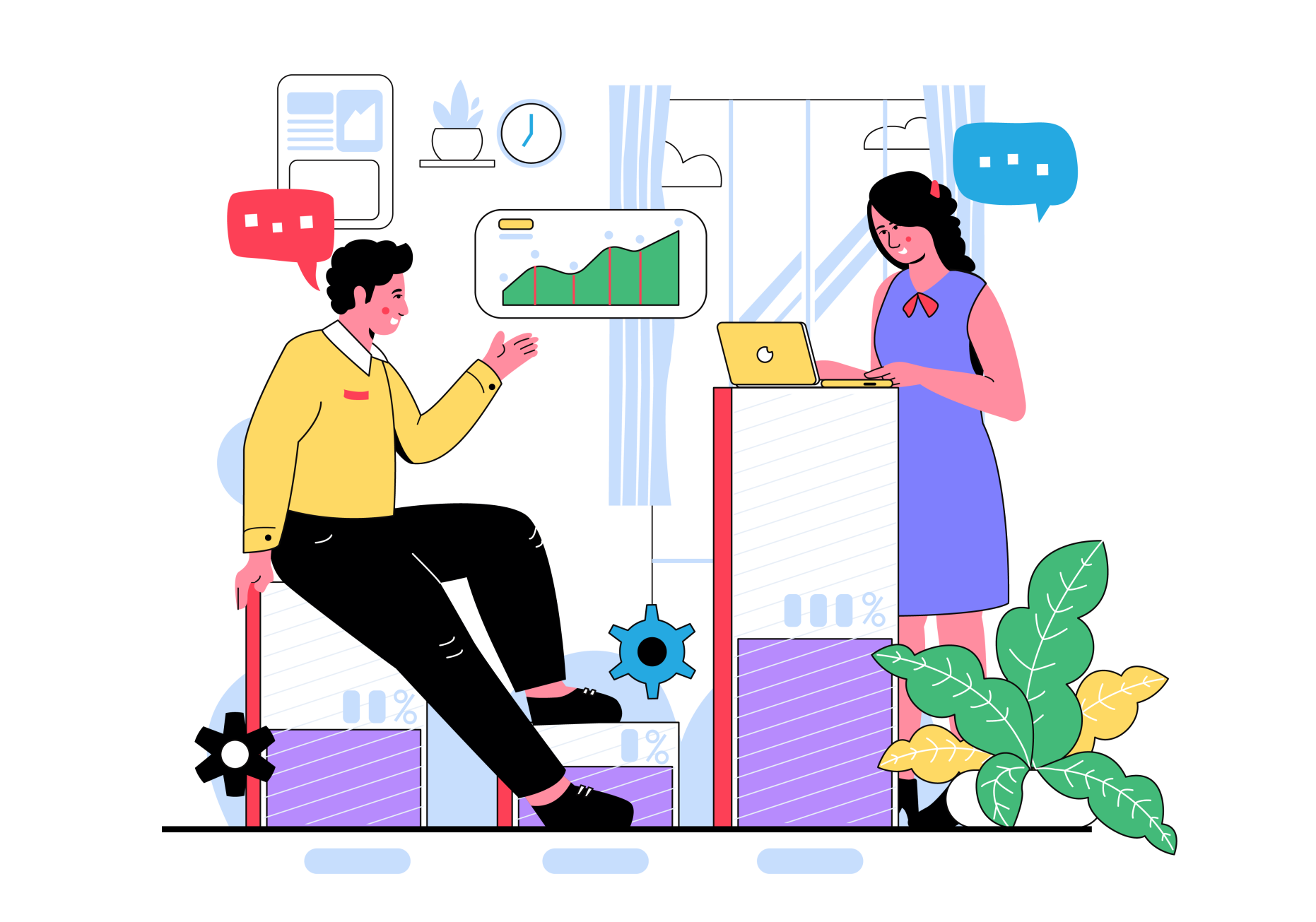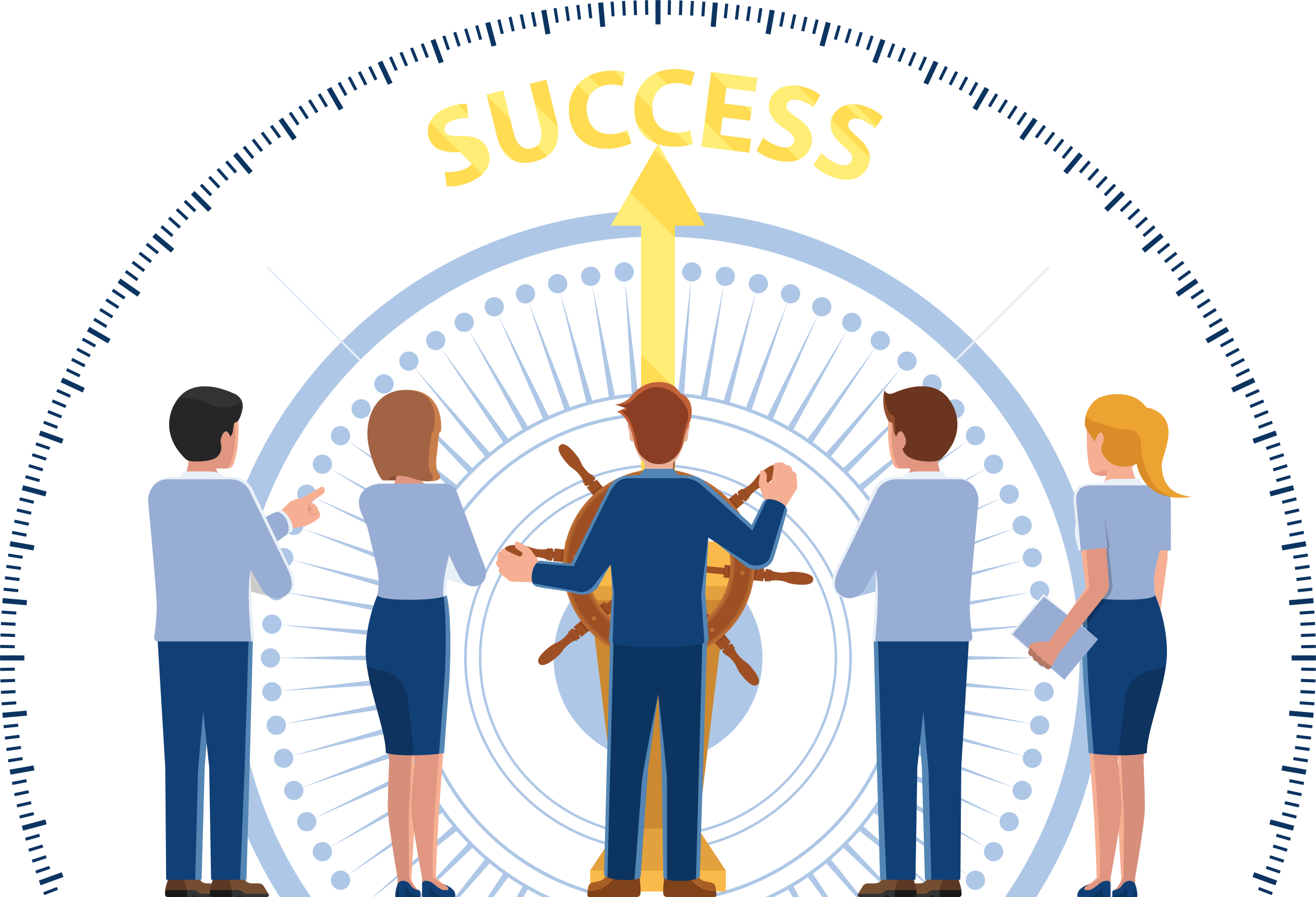Preparing for a New Customer Engagement
Part Three: Internal Handover and Customer Information
Internal handover
Types of Handover
A great starting point for CSMs to prepare themselves for an upcoming customer engagement is to obtain some sort of handover from colleagues who have already been involved with this customer engagement. Typically this handover should come from the AM or other sales executive who has been actively leading the sales process, but others such as solution architects, service managers and implementation/configuration engineers may also be important to talk to. It really all depends on what your company sells and who is involved pre customer adoption. If you’re new to your company you will definitely need to find out who is typically involved in customer engagements prior to your own involvement as the CSM. You should also find out whether there is an existing handover process or methodology and if so how it works.
Working with Colleagues
Remember that if the concept of customer success management is new or relatively new to your company the individuals you will be getting the handover from may have a limited or even no understanding of what customer success management is or what CSMs do. If this is the case you will need to do some internal evangelization and education as discussed in the previous section above to help them understand your role and to help them to feel comfortable working with you and sharing information.
There is no need to make your description of the CSM’s role complicated. An initial “elevator pitch” of one or two sentences in duration might be a good starting point to get the basic concepts of the role across. This can then be followed up by responding to specific questions. The elevator pitch might say something like:
“The idea of the customer success manager is to continue the support and assistance to the customer that the salesperson provided during the pre-sales phase on into the post-sales phase. This support and assistance focuses on helping the customer with their onboarding, adoption and value realization processes. The benefit for the customer is greater levels of value being realized more quickly and efficiently from the solutions they have purchased from us. The value for us is a deeper relationship with the customer, higher renewal rates for annual contracts and more upselling and cross-selling opportunities.”
The one person who can sometimes feel most uncomfortable is the AM (or equivalent) and this tends to be because they are concerned about protecting what they perceive as “their” account from negative interference. This is understandable since salespeople either thrive or die based upon their sales performance and so of course they will want to protect their livelihood by making sure that the existing trust relationships that they have built up with their customers over the years are not trashed by having someone else coming in and making a fool of themselves in front of those customers. It’s a natural concern and one that the CSM should be aware of and be prepared to deal with should it occur.
Just as for ourselves as CSMs your colleagues in other departments will also have busy schedules, so help them to help you by not waiting until the last minute to arrange a handover from them. Instead give them plenty of advance notice and get something organized into you own and their diaries well ahead of time. That way if the meeting has to be re-arranged you will have time left to make that re-arrangement and will still not miss your own deadline of being available and ready to hit the ground running with the customer as soon as they are ready to commence with their step 5.
Conducting a Handover
If a formal handover process or methodology already exists then make sure you have familiarized yourself with it prior to this meeting. If no formal process or methodology exists then you will need to give a little more thought to how to conduct the meeting. It is important that you get as much out of the handover as possible, so you will need to make sure that you cover off everything you need to know. This might include information on the following topics:
| Topic | Description |
| Customer Information | Basic customer information including name, contact details and some background on what they do, where and how they operate, who their customers are, what type of relationship we have with them, etc |
| Solution and contract information | A description of the products and services that were sold together with any customization, configuration or other professional services sold alongside them and any important contract terms including deadlines, qualities, duration, etc. |
| Customer outcome requirements | The required or anticipated outcomes from the solution that were specified by the customer or assumed by us, and a breakdown of any outcome commitments that were made by us. Information about any agreed measurements, milestones and deadlines |
| Our outcome requirements | An understanding of the deal value, both immediate and predicted over the lifecycle term. An understanding of any other anticipated or desired outcomes such as contract size increases, additional sales, and/or advocacy |
| Stakeholder information | A breakdown of the people who have been, are and will be involved in the engagement on both sides (us and customer) |
| Third parties | Information about any third party organizations who are also involved in the project and a summary of their involvement |
| Project status | A summary of the current situation together with any agreed activities and deadlines moving forwards. An understanding of how well the project has gone thus far and any known problems |
| Key supplier contact information | A list of essential contacts relating to each product and service that is contained within the solution that the customer has purchased, including those from third parties |
| Existing meeting and reporting arrangements | An understanding of how often customer meetings have taken place and their style and format. An understanding of what information is already being reported to the customer and how thus information is formatted and presented |
| Processes for handling problem resolution | An understanding of how technical support and problem resolution services are provided, together with relevant contact details and authorization information |
The order that these are shown in is the recommended order in which to discuss the project during your handover, since there are occasions when information from earlier topics may serve as context that makes it easier to understand information from later topics. However in reality the important thing is to get as good a briefing as possible and you can always review the information again in your own time later. With this in mind the CSM should have a plan but should maintain flexibility around the order in which these items are discussed, since sometimes certain information may be incomplete or unknown and may need to be circled back to at a later stage.
We will now take a separate section to discuss each of these topics in more detail, with a particular focus on why and how to get the information on each topic, as well as what information to obtain.
Customer information
Understanding the Customer
Understanding the customer as an overall entity could arguably be described as the most general and least directly related to the specific solution that has been sold of all the recommended topics contained within a handover. However a good understanding of the customer provides a strong context from which other information such as outcome requirements can be understood far better. This is why it is first on the list of topics and it is also why my own belief is that a profound understanding of the customer as a whole is actually paramount for CSMs who wish to work consultatively with their customers and generate some real business value for their customers. Time spent understanding the customer as a whole will help the CSM to appreciate the reasons behind the outcomes that were determined, the decisions that were made around the solution details and the types of challenges that might be faced in getting the solution adopted.
Researching Information about the Customer
Information about the customer should be fairly readily available. The account manager is likely to be able to provide you with a sufficiently thorough briefing about who the customer is, what they do and also what type of relationship exists between the customer and your own organization. However you may need just to take a moment to explain why you need this information and prompt them with a few well-chosen questions to help them understand what information you require from them. Any information gaps can generally be discovered either by referencing your own company’s CRM (customer relationship management) system or a more general search on the Internet, although of course the Internet will not be able to tell you much if anything about your own company’s relationship with the customer. If getting hold of the account manager or other colleagues to perform the handover is difficult and perhaps if they have indicated that they have limited time available to brief you it may be worthwhile doing this sort of research before your handover so that you can reduce the burden on them. However it is always worth getting some sort of overview from your colleague if at all possible, since this will include opinion as well as facts and will therefore provide you with a richer and more three-dimensional understanding than just the facts alone.
There is really no end to the amount of research one could do on a customer organization – especially a larger or more complex one. The CSM needs to bear in mind the need for time management, and gather only enough information for their purposes. As has previously been stated this may also mean taking an iterative approach and gaining enough of the picture to kick off the engagement, filling in more details later as the need arises. This approach might save some time and is particularly important if the CSM had little or no prior notice about the engagement and the customer is waiting for the CSM to start. Of course ideally the CSM will have made sure they had plenty of notice and therefore plenty of time in which to conduct whatever research is necessary prior to the engagement start.
Types of Customer Information to Research
What we need as a CSM to make sure we know about the company is their basic information – name, location, industry, size, etc – plus a basic understanding of their position and standing within their industry (ie are they an industry leader, are they very specialist or quite generalist in what they sell, etc) and a basic understanding of what they sell and who their customers are. It’s useful to understand the customer’s business model in terms of what departments or organizational units exist (such as the company’s org chart) and how they interrelate with each other, including how the customer produces its products and/or services and how it goes about reaching and selling to its customers. We will discuss the concept of business models in more depth in later chapters, but for now a basic understanding of the corporate structure and any key partners or suppliers will suffice.
As well as this it is important to understand the current status of the business and the company vision and core strategies. This gives the CSM a picture of both where the company is now and where they desire to end up in the mid to long term. This information in terms helps the CSM to understand at least the general direction in which the customer is headed and perhaps even some of the more specific qualities of the journey that they will be undergoing.
If the CSM is not familiar with the customer’s industry it will pay the CSM to spend a little time familiarizing themselves with it, as this is the context for the customer’s business – the sea in which the fish swims as it were. Information such as market size and maturity, key players and current opportunities and challenges is very useful as it helps the CSM to be relevant when talking to customer stakeholders. Also, knowing which KPIs (key performance indicators) are important to this Customer’s industry can be extremely useful. This sort of information is readily available on the Internet for most if not all industries. For example if the customer is retail bank with branches across South America the CSM might type “retail banking opportunities and challenges in South America” into a search engine. A little bit of exploration along these lines can uncover all sorts of interesting contextual information. Of course if the customer is a larger organization with an established brand name then a similar but more specific search using the customer name may well also yield interesting information about them that you may not get from the customer organization itself.







